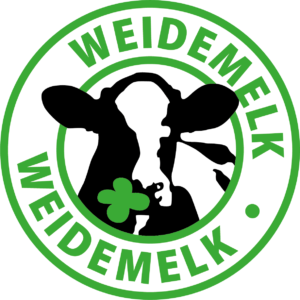The Dutch dairy sector has committed itself to cows in the meadows
The Dutch Dairy Chain is committed to keeping cows in the Dutch landscape by grazing. This is supported throughout the chain by the Meadow Grazing Covenant.
In the sector we are actively working on the maintenance and increase of the percentage of dairy farmers putting their cows out into the meadows. Knowledge is developed through research and spread by means of education and guidance of farmers in their switch to grazing. The Stichting Weidegang [Grazing Foundation] plays an important part here. The Amazing Grazing project that was completed in 2019 has provided new scientific knowledge and practical solutions, paying attention to e.g. growth of grass, absorption of grass and grazing behaviour of cows.
Increase since 2015
The percentage of companies with some form of grazing further increased to 84.0% in 2021. The decreasing trend in the percentage of farms with some form of grazing was halted and converted into a rising trend in 2015. In 2018, the objective of the Outdoor Grazing Covenant of 81.2% in 2020 (the level of 2012) was reached for the first time.

Objectives 2030

- At least maintenance of the level of grazing of the year 2012:
– 81.2% of the farms applies some form of grazing. - The aim is to stay as close as possible to the spread in 2012:
– 73.6% of the farms applying full grazing (at least 120 days for a minimum of 6 hours per day or at least 120 days per year and for a minimum of 720 hours per year),
– 7.6% of the farms applying any other form of grazing.

Result

Results
compared to objectives 2020
|
Subtheme
|
Objective 2020
|
Indicator |
Baseline measurement 2012
|
Result 2021 |
| Grazing | Maintenance level 2012 = 81.2% | Percentage of farms with grazing (%) | 81.2 | 84.0 |
| Grazing | Percentage of farms with full (120 days/6 hours or 720 hours/120 days) grazing (%) | 73.6 | 77.9 |
In 2021 the percentage of dairy farms with some form of grazing rose to 84%. The percentage has not been this high since the dairy sector started to monitor the grazing of cows in 2012. The objective of the covenant of 81.2% (the level of 2012) was reached in 2018.
83 organisations signed the Outdoor Grazing Covenant and contribute to the preservation of the cow in the Dutch landscape.
The Meadow Milk logo can be found on every product made of 100% meadow milk. By buying products with a Meadow Milk logo, the consumer contributes to the preservation of the cow in the Dutch landscape.

Method of working

- The Outdoor Grazing Covenant was introduced in 2012. There were 83 signatories in 2020. Every signatory is actively committed to stimulating grazing. The signatories are really diverse businesses and institutions, including: NGOs, supermarkets, research and education institutes, dairy processing companies and feed suppliers.
- Dairy companies pay dairy farmers a higher price for meadow milk.
- Products made from meadow milk can be recognised by the Meadow Milk logo (in the Netherlands). By buying these products the consumer can make a contribution to the preservation of cows in the meadows.

- The Stichting Weidegang [Grazing Foundation] supports dairy farmers who want to make the switch to grazing and manages the Meadow Milk logo.
- In the Nieuwe Weiders [New Grazers] programme, special grazing coaches guide the dairy farmers who want to switch to grazing. Dairy farmers participating in the programme receive guidance, tips and support for two seasons that can help them to fit the grazing as well as possible into their dairy farm.
- The project Grip op Gras [Grip on Grass] is about accurate management and thinking ahead with respect to grazing. Grazing coaches share the most recent insights into grazing and grassland management. This is about directly converting more grass into milk, about protein content of the grass and the total ration. Grip op Gras goes hand in hand with Grip op Eiwit [Grip on Protein].
- The Amazing Grazing project that was completed in 20219 has provided new scientific knowledge and practical solutions, paying attention to e.g. growth of grass, absorption of grass and grazing behaviour of cows.
- A lector for grazing and grassland is working in anchoring and strengthening the practical knowledge of grazing in secondary and higher agricultural education.


 en
en  nl
nl